D
Dean Gibson
Guest
Verdict
Toyota is on good form with the Prius Mk4. The manufacturer has added more versatility to a car that was already a low emissions champion, and the issues that affected its predecessor have been addressed to the point where the Prius is one of our favourite ‘green’ cars. It’s seen off challenges from other eco models including the hybrid Kia Niro SUV and Hyundai Ioniq, as well as being a genuine alternative to a conventional family hatchback.
About the Toyota Prius
Hybrids have to deliver impressive efficiency, and the Toyota Prius has 25 years of development behind it to perfect the formula. It’s pricier than some newcomers, but it has a generous spec, plus its cabin is spacious and there's plenty of boot space, which makes it a viable family car.
- SEE MORE Best hybrid cars to buy 2021
The latest Prius also serves up decent performance, while the ride is also more refined than ever. Four generations of development mean this is the most complete hybrid yet.
It was named our 2016 Green Car of the Year as improvements in electric motor and battery technology see the Prius offering impressive emissions and mpg figures in official tests. It’s also more spacious inside, but that bold exterior styling won’t be to everyone’s taste.
Toyota knows this, and smartened up the Prius’ styling in a 2019 facelift. The new car gets slightly more conventional-looking headlights, while the tail-lights now stretch horizontally across the bootlid rather than scything downwards towards the bumper. Most Prius styling cues, like the sloping roof and split rear windscreen, are still present and correct.

Toyota Prius boot - seats down

Toyota Prius interior
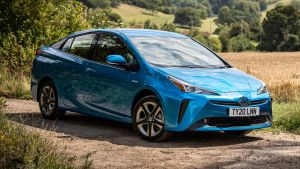
Toyota Prius parked
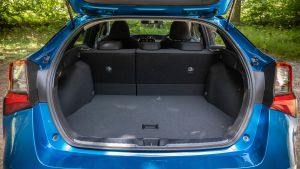
Toyota Prius boot
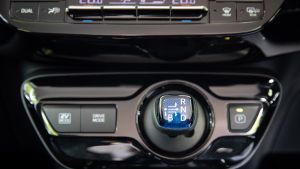
Toyota Prius gearlever
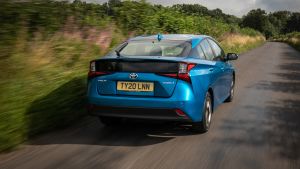
Toyota Prius driving - rear
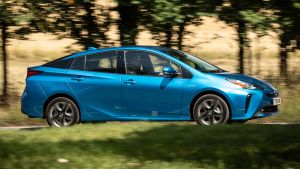
Toyota Prius driving - side
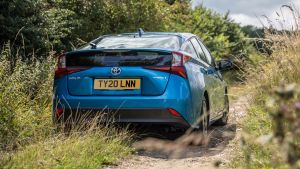
Toyota Prius rear

Toyota Prius rear seats

Toyota Prius driving - close up
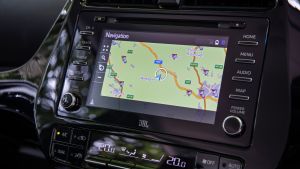
Toyota Prius sat nav
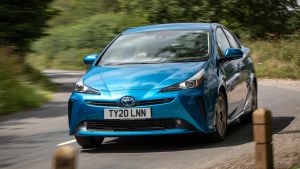
Toyota Prius driving
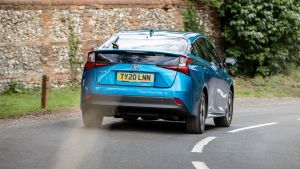
Toyota Prius cornering - rear view
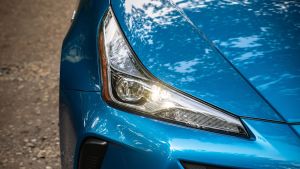
Toyota Prius headlight
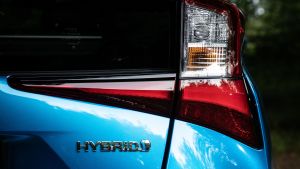
Toyota Prius tail-light
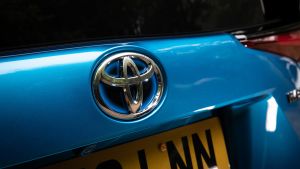
Toyota Prius badge
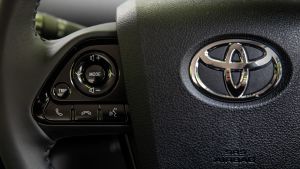
Toyota Prius steering wheel controls

Toyota Prius alloy wheel
Inside it’s similarly unusual, although previous Prius owners will feel right at home. With the speedometer and driving information places nearer the windscreen, there’s a big expanse of dashboard right behind the steering wheel. This helps the car feel quite spacious. Toyota’s infotainment system is still far from the best around, but happily it now includes Android Auto and Apple CarPlay so you can use your phone’s operating system and apps rather than Toyota’s.
All cars come with a lot of equipment, like LED headlights, multi-zone climate control and a reversing camera. Toyota’s Safety Sense 2 driver assistance package is standard, too, and this includes lane-departure warning, high-beam assist and adaptive cruise control.
While the looks of the current Prius will be a little too out-there for some buyers, the running gear underneath is good enough that the Prius could be considered as a rival to a number of compact family cars. The main Prius rivals that use a similar petrol-electric hybrid set-up are the Kia Niro and Hyundai Ioniq, while a hybrid version of the Ford Mondeo only demonstrates how much further down the line Toyota is with its hybrid tech than other mainstream makers.
But as fuel economy is favourable, the Toyota Prius can also be considered when compared to conventional diesel hatchbacks. Because the Prius has been designed around its hybrid running gear, there's no compromise on interior space, and you could consider a Prius alongside cars such as the VW Golf, Ford Focus and Vauxhall Astra, as well as the rest of the compact hatchback fraternity.
Over time, the Toyota Prius has become the definitive hybrid car for sale in the UK today. With more than 20 years of development to its name, plus a look and image that means it's instantly recognisable, it's one of those cars that is known by a single name if you tell people outside the world of cars that you 'drive a Prius'.
Its ubiquity has been accelerated by its use by private hire and ride hailing companies across the world, where its reliability and quiet running on battery and petrol power have stood it in good stead. The range has expanded to include the range-extending Prius Plug-in, while the petrol-electric tech has found its way into other Toyota and Lexus models, so much so that diesel power has pretty much been entirely replaced.

Toyota Prius boot - seats down

Toyota Prius interior

Toyota Prius parked

Toyota Prius boot

Toyota Prius gearlever

Toyota Prius driving - rear

Toyota Prius driving - side

Toyota Prius rear

Toyota Prius rear seats

Toyota Prius driving - close up

Toyota Prius sat nav

Toyota Prius driving

Toyota Prius cornering - rear view

Toyota Prius headlight

Toyota Prius tail-light

Toyota Prius badge

Toyota Prius steering wheel controls

Toyota Prius alloy wheel
The Toyota Prius Mk4 is based on Toyota's latest platform that's also used on the C-HR crossover and latest Corolla. This gives the Prius surprisingly engaging handling, even on the narrow energy-saving tyres that are fitted as standard. The low-slung driving position and compact shape also add to this sporty feel.
Power comes from a 97bhp 1.8 VVT petrol engine combined with a 71bhp electric motor, while a 1.31kWh battery is stowed under the platform to store energy from braking and the electric motor. All cars get a CVT auto, but while past cars have been hindered by the slow responses of the gearbox, it's much better in the current Prius. Front-wheel drive is standard across the range, although a four-wheel drive Prius is now available from 2019 onwards.
Prices for the Prius start from around £25,000, and the range comprises Active, Business Edition, Business Edition Plus and Excel trims. The most expensive Prius (discounting the Plug-in model) comes in at around £29,000, while running costs vary slightly depending on what trim you go for.
For an alternative review of the latest Toyota Prius visit our sister site DrivingElectric...
Continue reading...
